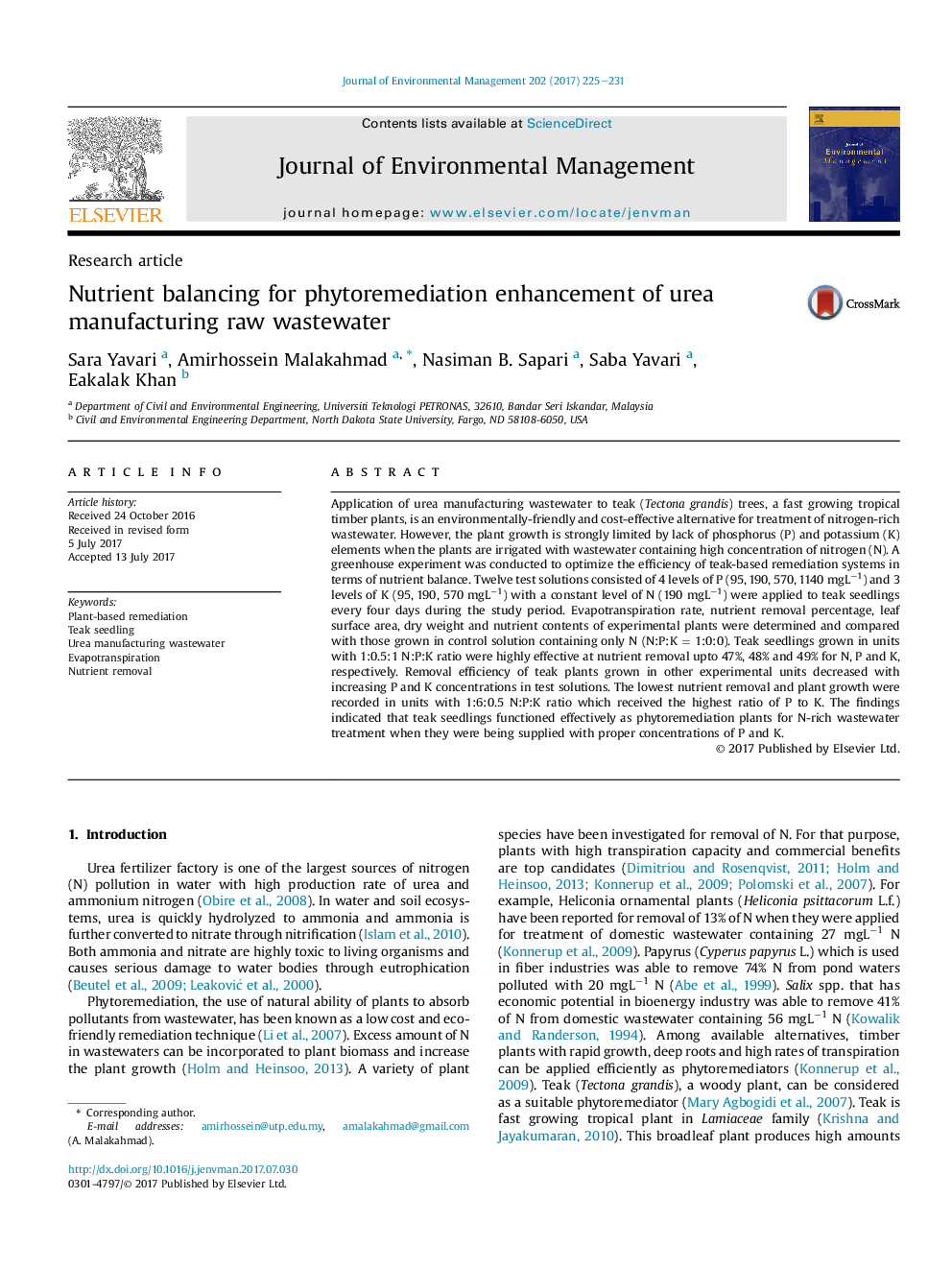| Article ID | Journal | Published Year | Pages | File Type |
|---|---|---|---|---|
| 5116472 | Journal of Environmental Management | 2017 | 7 Pages |
Abstract
Application of urea manufacturing wastewater to teak (Tectona grandis) trees, a fast growing tropical timber plants, is an environmentally-friendly and cost-effective alternative for treatment of nitrogen-rich wastewater. However, the plant growth is strongly limited by lack of phosphorus (P) and potassium (K) elements when the plants are irrigated with wastewater containing high concentration of nitrogen (N). A greenhouse experiment was conducted to optimize the efficiency of teak-based remediation systems in terms of nutrient balance. Twelve test solutions consisted of 4 levels of P (95, 190, 570, 1140Â mgLâ1) and 3 levels of K (95, 190, 570Â mgLâ1) with a constant level of N (190Â mgLâ1) were applied to teak seedlings every four days during the study period. Evapotranspiration rate, nutrient removal percentage, leaf surface area, dry weight and nutrient contents of experimental plants were determined and compared with those grown in control solution containing only N (N:P:KÂ =Â 1:0:0). Teak seedlings grown in units with 1:0.5:1Â N:P:K ratio were highly effective at nutrient removal upto 47%, 48% and 49% for N, P and K, respectively. Removal efficiency of teak plants grown in other experimental units decreased with increasing P and K concentrations in test solutions. The lowest nutrient removal and plant growth were recorded in units with 1:6:0.5Â N:P:K ratio which received the highest ratio of P to K. The findings indicated that teak seedlings functioned effectively as phytoremediation plants for N-rich wastewater treatment when they were being supplied with proper concentrations of P and K.
Keywords
Related Topics
Physical Sciences and Engineering
Energy
Renewable Energy, Sustainability and the Environment
Authors
Sara Yavari, Amirhossein Malakahmad, Nasiman B. Sapari, Saba Yavari, Eakalak Khan,
